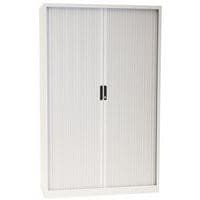How to make your own standing desk – Manutan UK
How to make your own standing desk
Sitting at a desk for long periods of time can have a negative effect on your health. A sedentary working environment has been linked to a number of health problems, including obesity, heart disease, and type 2 diabetes, along with cardiovascular issues and back pain.
If you are someone who spends a lot of time sitting at a desk or workstation, you may wish to consider making your own standing desk. There are several ways to do this which we will explore below.
Buy a Manutan standing desk converter
One of the simplest, safest and most effective ways to make your own standing desk is to invest in a ready-made standing desk converter, also known as a desk riser. No DIY is required, and all our YoYo desk converters are ergonomic and height-adjustable, meaning you can raise or lower the height to suit your requirements.
What is the best standing desk converter?
With a wide range of adjustable standing desk converters available at Manutan, you’re sure to find the right one best suited to your needs and requirements. Need a converter for one screen? Check out the Home/Office YoYo Mini – ideal for smaller desks and workstations. Need space for two monitors? The YoYo Go 2 Dual Monitor will be perfect for you. With no installation required, desk risers are a great low-cost option for creating a healthy, productive and motivational working environment. Why not check out our full range today to find the best riser for you?
What else can you use to make a standing desk?
-
Boxes or books
One of the easiest and cheapest ways to make a sit-stand desk is to place boxes or books on top of your existing desk or table to support your monitor. While this makes height adjustments easy, one of the potential pitfalls with this option is a lack of stability, meaning the monitor or laptop could easily topple over if the desk is knocked or bumped into. Another problem could be that if your computer is propped up, you may find yourself continuously having to bend down to reach other desktop materials.
-
A dresser instead of a desk
A dresser may not be the obvious choice for a standing desk, but it can be a good solution when working from home, as long as the height of the dresser is aligned with your own height. It’s also a good option if you’re short of space or don’t have a home office. One thing to consider with a dresser is its lack of height adjustability, meaning you will be unable to alternate between sitting and standing.
-
A bookshelf
Bookshelves, whether attached to a wall or freestanding, are a great, stylish alternative to a standing desk, and useful if you require a number of surfaces at your disposal, along with space for storage. While they are not height adjustable, with the right bookcase, you can use a shelf at standing height and one at sitting height, allowing you the option to alternate throughout the day.
Why should you make your own standing desk?
Making your own standing desk has many benefits, including the following:
-
It’s cost-effective
Making your own sit stand workspace is a cost-effective alternative to buying a standing desk. This can be especially beneficial for people who are on a tight budget or who want to try out a standing desk without making a significant financial investment.
-
It’s personalised
Making your own standing desk means you can customise it to fit your specific needs and preferences, and you can tailor it to suit your height, workstyle and décor.
-
It can be portable
If you use a desk converter to make your standing desk, this enables the user to work flexibly and is a great option for people who work in different locations or who need to share a desk with others.
What are the benefits of a standing desk?
A standing desk has many advantages including:
- Improved posture
- Increased energy and productivity
- Reduced risk of back ache, obesity, heart disease, and other health problems
- Greater flexibility
How long should you stand at a standing desk?
There is no one-size-fits-all answer to how long you should stand at a standing desk. The amount of time you should spend standing will depend on various factors, such as your age, health, and general fitness level.
In the first few days, you may wish to start slowly and gradually increase the amount of time you spend standing at your desk. For example, you could start by standing for 15-20 minutes at a time and gradually increase to 30-60 minutes. You can also take regular breaks to sit down and give your muscles a rest.
It is important to listen to your body and pay attention to any discomfort or pain you may be experiencing. If you start to feel tired or experience muscle aches, it is a good idea to take a break and sit down for a while.
What is the ideal height for a standing desk?
As a general rule, the ideal desk height is one that is set to elbow height, although there are occasional exceptions. Your eyes should be in line with a point on the screen that is about 5 to 10 cm below the top of your monitor. While you are standing, ensure you maintain good posture with your shoulders back and straight and no hunching. Your forearms should be able to rest flat on the surface of the standing desk, at a 90-degree position from the ground.






